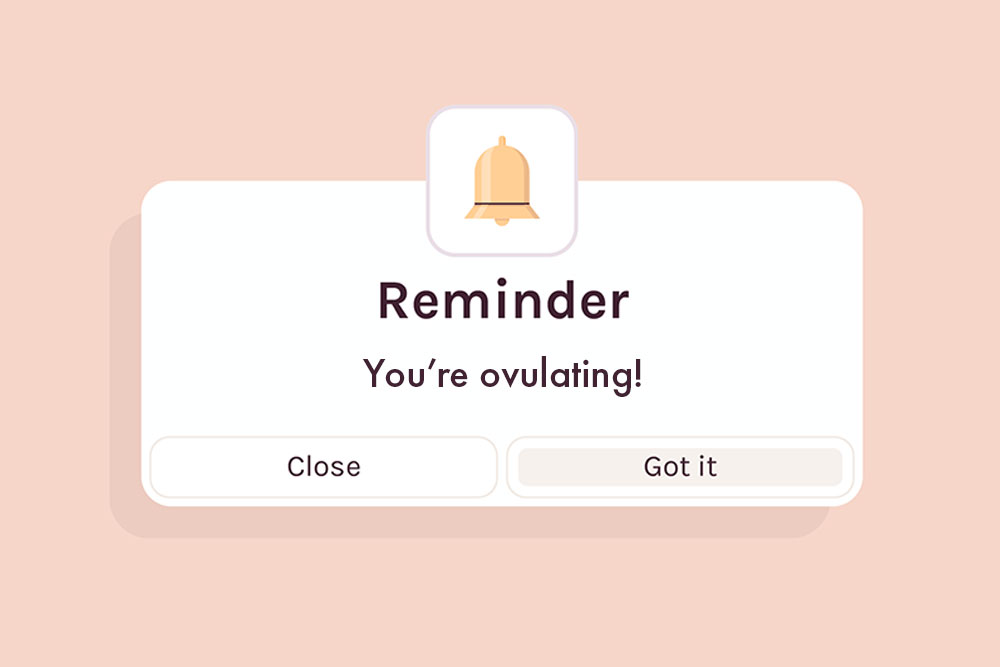The Ovulation Equation

Contrary to what you might have thought, there are only a handful of days you can get pregnant each month. Here’s how to track your ovulation window to increase your chances of conceiving or avoiding pregnancy.
Expert Source: Amy Beckley, PhD, owner and CEO of Proov
Understanding ovulation is an essential tool when it comes to getting pregnant—whether you’re trying to conceive or trying not to, but it isn’t always easy to follow. Different factors play into when your body is primed and ready to make a baby, and recognizing these signs can give you greater control over your fertility. With a solid understanding of fertility, how ovulation works, and what you should look for each cycle, you’ll be better positioned to achieve the desired outcome.
What Is Fertility?
Fertility is an individual’s— male or female—ability to produce offspring. In females, fertility refers to the capacity of the reproductive system to conceive, carry, and deliver a healthy baby; for men, it refers to the ability to produce healthy sperm that can fertilize a female’s egg to create an embryo. When any of these components are impaired, it may lead to difficulty getting pregnant or infertility.
Fertility can be influenced by a range of factors, including age, genetics, lifestyle habits, stress, and underlying medical conditions, such as polycystic ovarian syndrome, endometriosis, or erectile dysfunction. It typically takes four to six months for young couples to become pregnant, and it can take as long as a year to conceive. But if you’re 35 or older, it’s advised to see a doctor within six months of trying to get pregnant to rule out any fertility issues.
What Is Ovulation?
During a menstrual cycle, an egg is released from one of the ovaries, travels down the fallopian tube, and stays there for up to 24 hours to be fertilized by sperm. This phase is called “ovulation,” and it generally occurs about two weeks before the start of a menstrual period or around day 14 of a 28-day cycle. However, each person’s cycle length is different, and the time between ovulation and the beginning of a period may vary. Thankfully, if you are like many people and do not have a typical 28-day cycle, there are ways to determine your cycle length and when you’re most likely to ovulate (more on that later).
According to the Cleveland Clinic, ovulation actually starts in the brain. Different parts of the organ release three different hormones that work together to stimulate the ovaries to produce steroids, trigger ovulation, encourage testosterone production, and support the reproductive process.
How To Know When You’re Fertile
Like ovulation, understanding and tracking your fertile window is paramount for conception. “[A person] is most fertile the four days leading up to ovulation, the day of ovulation, and the day after ovulation,” explains Amy Beckley, PhD, owner and CEO of Proov, a line of at-home fertility screening tests. Sperm can live inside the female reproductive tract for up to five days after sexual intercourse, so anytime you have sex within your ovulation window, you’re increasing your odds of getting pregnant.
One way to track your ovulation is by keeping a menstrual calendar or using a period calculator, but you’ll have to gather details (start and end dates, length of period, and average number of days in your cycle) to make this effective. Aside from keeping a calendar, there are also signs of ovulation that can help you better predict your window.
Cervical mucus
Vaginal secretions change color and consistency throughout the menstrual cycle. Before ovulation, discharge is thick, white, and dry, but once your ovary has released an egg, “the vaginal discharge is watery or stretchy like egg whites,” says Dr. Beckley. According to the Mayo Clinic, you’re the most fertile when your cervical secretions become abundant, clear, stretchy, wet, and slippery. Ovulation most likely occurs during or one day after your last day of this type of vaginal discharge, known as your “peak day,” and is the optimal time to have sex if trying to get pregnant.
You’ll have to do some restroom research to check your cervical mucus. Many people notice changes in what they see in their underwear, but if you naturally do not produce as much discharge, you can use a clean finger or tissue paper to gently wipe your vagina and make observations. Keeping a daily journal of changes to your cervical secretions will help you to become familiar with what the different stages look and feel like during your cycle. Keep track of color (yellow, white, clear, or cloudy), consistency (thick, sticky, or stretchy), and feel (dry, wet, or slippery) for best results.
Basal body temperature
Your “basal body temperature” refers to your body temperature at rest and increases slightly during ovulation. After ovulation, your body releases the hormone progesterone that signals the brain to increase your body temperature by approximately 0.5 to 1 degree Fahrenheit. This rise in temperature sustains until the start of your period and goes back to normal at the end of your cycle. If your basal body temperature remains elevated, it could mean that you’re pregnant.
As with tracking your cervical mucus, paying attention to the fluctuations in your basal body temperature can help you identify patterns in your most-fertile days and pinpoint your peak day. To use this method, take your temperature using a basal body thermometer at the beginning of each day. A great time to do this is when you first wake up before getting out of bed. A basal body thermometer measures to tenths of a degree and is better at detecting slight fluctuations in heat during ovulation. It’s important to note that temperature change is considered a “lagging indicator,” meaning you will have to record your readings for months to best determine any patterns in your ovulation—slow and steady is the name of the ovulation game.
Increased libido
Perhaps a less concrete—but no less intriguing—factor in charting ovulation is a spiked sex drive. “When estrogen surges just before ovulation, a person’s libido is often elevated,” says Dr. Beckley. “Studies also show that men find women more attractive right before ovulation.” This is certainly helpful for partners interested in making a baby, but if you’re not ready to get pregnant, make sure you have a backup method of birth control ready to go if the mood strikes within this window of time.
In addition to cervical mucus and a rise in body temp and libido, some people experience secondary symptoms of ovulating, including light spotting, slight cramping or pain on one side of the pelvis, breast tenderness, abdominal bloating, and a heightened sense of smell, taste, or vision.
Ovulation tests
Natural methods of charting your ovulation are good to know and utilize, but they’re not the only available resources. Ovulation kits measure the amount of luteinizing hormone (LH) in your urine. This hormone exists in low concentrations throughout your cycle, but a build-up in LH that is detectable in a urine test—also known as an “LH surge”—usually indicates that ovulation will take place within 12 to 24 hours.
According to Dr. Beckley, at-home ovulation tests are “fantastic at predicting when you might ovulate and are likely fertile. However, they do not confirm if you ovulated or your ovulation was pregnancy-friendly,” she explains, adding, “Therefore, ovulation predictor tests should be used with a PDG test to confirm ovulation and ensure [progesterone] levels are high during the implantation window. Predicting and confirming ovulation is important to give people the best chance at conceiving each cycle.”
Dr. Beckley also notes that for people with irregular periods, it’s best to use ovulation predictor kits that measure LH because these tests help determine when a person is likely ovulating. She adds that these people should avoid period tracker apps, as they “are not very accurate with irregular cycles.”
Pinpointing When To Try To Get Pregnant
It can seem like a bit of a puzzle, but by paying attention to cues from Mother Nature and enlisting the help of ovulation tests, you can find your ovulation window and organize sexual activity accordingly. (Sounds sexy, right?)
“The best time to conceive is one to three days before ovulation. By tracking estrogen and LH with a product like Proov Complete, you can pinpoint those one to three days better as LH testing alone can usually only identify one of those days,” says Dr. Beckley.
Increasing your sexual activity around and during ovulation can increase your chances of getting pregnant as more sperm is introduced into the vaginal canal and potentially able to fertilize an egg.
Speaking of sperm, Dr. Beckley also makes a point that partners hoping to conceive should approach fertility together. “Male factor infertility makes up about 40% of infertility, and the female partner should not take all the burden. It takes an egg and a sperm, so I recommend getting the male partner tested sooner than later.”
Whether you’re trying to conceive or hoping to avoid unwanted pregnancy, understanding your cycle and how ovulation works are great ways to stay in the driver’s seat when it comes to your fertility. If you need greater support, reach out to your provider to discuss these methods and options to achieve the best outcome for you and your partner.








